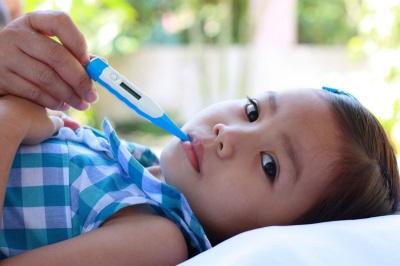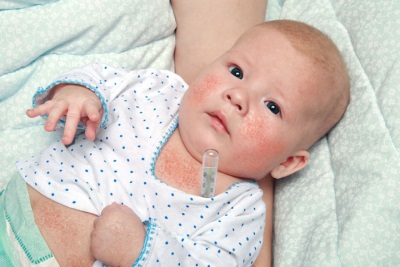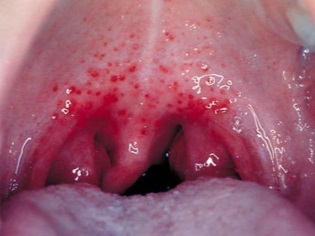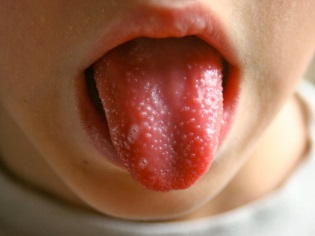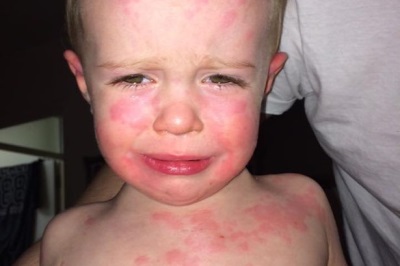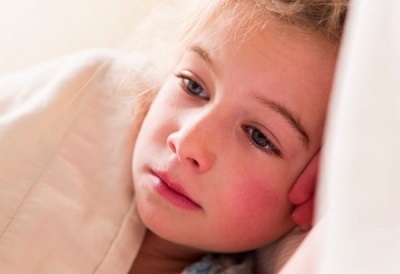Scarlet fever rash
The appearance of a rash is one of the common symptoms of childhood infections, and may also be due to non-infectious causes. However, some types of rash have a characteristic appearance, allowing to diagnose a particular disease. This feature has a rash with scarlet fever. After examining a child with a similar rash and identifying other typical symptoms, the pediatrician is more likely to make a diagnosis and prescribe the correct treatment.
What is it?
Scarlet fever they call one of the infectious diseases most commonly diagnosed in children 2-10 years old; its pathogen is group A streptococci, and all the symptoms are caused by exposure to erythrotoxin, which is secreted by these bacteria.
The disease is transmitted from both sick children (a child is contagious from the onset of clinical symptoms) or a recently ill child (bacteria are released up to three weeks after recovery), and from streptococcal carriers. Transmission occurs through airborne droplets, and through objects used by the patient or carrier of bacteria.
The incubation period can be only a few hours, and reach 12 days, but most often the disease begins to manifest itself in 2-3 days after contact of the child with the pathogen. The onset of scarlet fever is usually acute, and the first symptoms are fever and severe sore throat. A child who has had scarlet fever in most cases develops a strong immunity.
When does a rash appear?
For many children, rashes appear on the first day of the onset of clinical symptoms of scarlet fever (after 6-12 hours). However, a rash can form on the skin of a sick child and on the second or third day after the deterioration of the general condition. The skin covered with rash to the touch reminds an emery paper. The harder the scarlet fever occurs, the more abundant and brighter the rash will be.
What other symptoms are there?
If the child develops a typical form of scarlet fever, then in addition to the rash, it will manifest itself:
- Symptoms of intoxication, which include an increase in body temperature up to 38-40 ° C, headaches, vomiting, nervous agitation or lethargy, pain in the joints and muscles, heart palpitations.
- Inflammation of the tonsils. It is manifested by a pronounced redness of the throat ("flaming throat"), the appearance of pain and purulent plaque.
- Changes in the language. In the first days of the disease, it becomes covered with bloom, but from the 2nd-4th day the tongue becomes grainy and bright red ("crimson").
What does a rash look like?
A child with scarlet fever on the reddened skin appears bright pink or red dots 1-2 mm, with a slight pressure on which the color of the rash increases. If you press the palm on the rash more, the rash will disappear, and the doctor will see only pale or yellowish skin. Such a sign of scarlet fever is called a "palm symptom."
Localization
In children with scarlet fever, the rash first covers the face, and then spreads to the flexor surfaces of the arms and legs, the groin area, the lateral parts of the body.
The rash on the face is located mainly on the cheeks, and can also go to the forehead, but in the area called the nasolabial triangle, there is no rash with scarlet fever.This area of the face remains pale, and this characteristic of scarlet fever is called a symptom of Filatov.
Also in children suffering from scarlet fever, the Pastia symptom is revealed, which is represented by the formation of dark red stripes of densely arranged elements of the rash in natural folds - under the armpits, under the knees, in the elbow folds.
Is it itchy?
As with many other diseases with a rash, rash can cause itching for scarlet fever. The itch is not expressed or is quite strong, which causes scratching on the baby’s skin. Some children have no itching.
When does it disappear?
After three to seven days from the onset of the rash begins to disappear. One to two weeks after the onset of the disease, it is replaced by desquamation. The feet and palms of the child begin to peel off from the tips of the fingers to large areas of skin, and on the body peeling is small (scaly). Pigmentation rash with scarlet fever does not leave.
Can there be scarlet fever without rashes?
In some children, the infection can actually proceed without a rash. However, other signs of scarlet fever (and sore throat and symptoms of intoxication) are present in the child.
What to do?
If the child has a fever, worsening of the general condition, sore throat, and then on the same day or after 1-3 days the body has covered a punctate rash, you should immediately call a doctor and isolate the patient.
The pediatrician will confirm scarlet fever and prescribe it to the child. antibioticsAfter all, the causative agent of scarlet fever is very sensitive to many antimicrobials, in particular - to penicillin antibiotics. They are prescribed a course of 7–10 days, which should not be interrupted, even if the child’s general condition became satisfactory and the rash disappeared. Additionally, children are prescribed allergy medications, vitamin supplements and other means for which there are indications.
Parents should also follow these doctor's recommendations:
- The entire acute period of the disease until the temperature drops the child should be in bed.
- Food for a child with scarlet fever should be given a liquid or semi-liquid, so as not to irritate the sore throat. Protein products limit a little.
- It is important for babies to provide plenty of warm drink.
- Scarlet fever rash is often not treated.
- Bathing with a rash is not prohibited, but on the contrary, will help relieve itching. However, when bathing the water should be warm, and rub the skin with a washcloth and wipe with a towel is not recommended. It is better to pour the baby out of the dipper, and then wrap it in a diaper.
- The child should be isolated from family members who have not suffered from scarlet fever. When taking care of a baby, you can use a gauze mask, and dishes, towels, toys and other items should be separated and not used by other people. In addition, frequent airing and wet cleaning of the room in which the patient is located is recommended.



